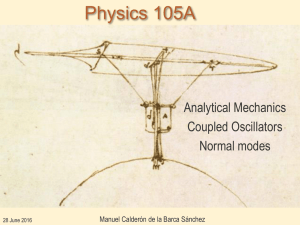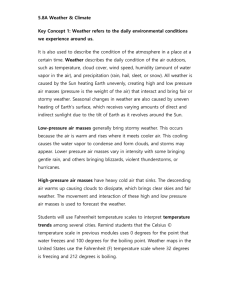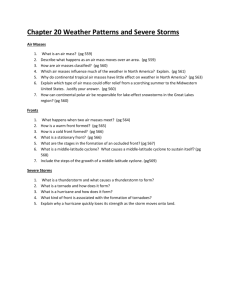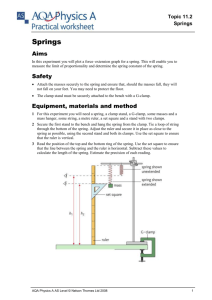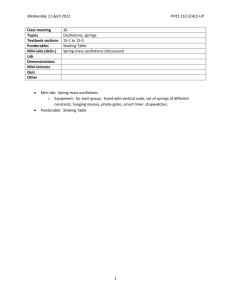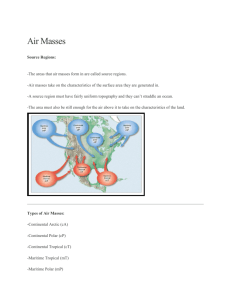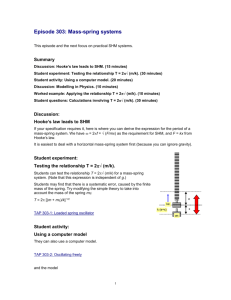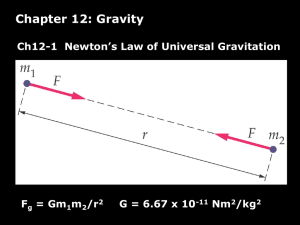Normal Modes
advertisement
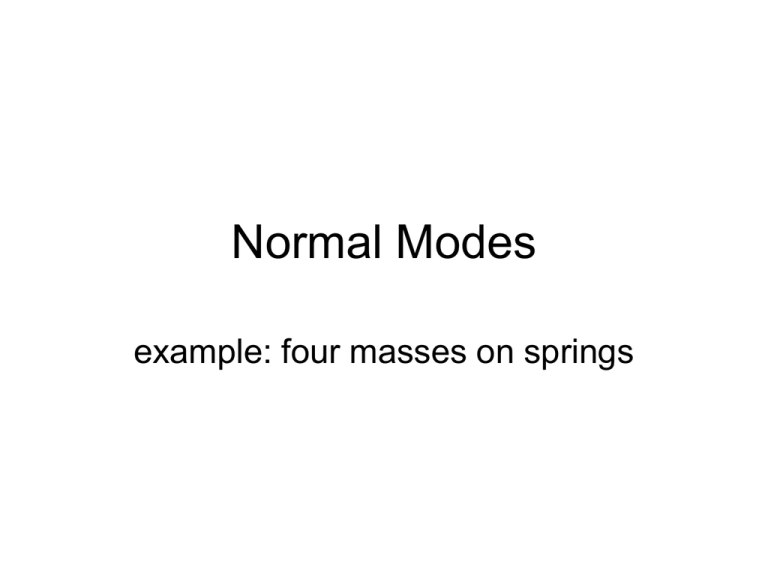
Normal Modes example: four masses on springs Four masses on springs • Find a physical description of a system that might look like this: • We will use: – Newton’s laws – Vectors – Matrices – Linearity (superpositions) – Complex numbers – – – – Differential equations Exponential functions Eigenvalues Eigenvectors Problem: masses on springs (I) • We consider four masses connected to springs with spring constant k and their motion restricted to one spatial dimension. • Step 1: Write down Newton’s law for the motion of the masses Problem: masses on springs (I) • Step 2: Combine the degrees of freedom into a vector and write the equations of motion as a matrix equation • Step 3: Use a complex exponential as the ansatz for the solution to this equation Problem: masses on springs (II) • Step 4: Substitute this ansatz into the equation of motion • Step 5: Solve the eigenvalue equation for eigenvalues 2 and eigenvectors v We do not need the negative frequency solutions since we only consider the real part as physically relevant Problem: masses on springs (III) • Find the eigenvectors (here not normalized) from the corresponding homogeneous equations • Step 6: The general solution is then given by a superposition of all these normal modes with complex amplitudes A1, A2, A3, A4 chosen to meet the initial conditions: • If the system is in one of these normal modes (i.e. all Ai zero except An) all masses will oscillate with the same frequency n=n(k/m)1/2 and constant amplitude ratios defined by vn . Problem: masses on springs (IV) • Visualization of the normal modes

